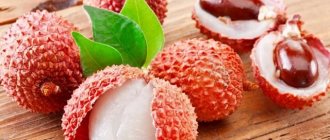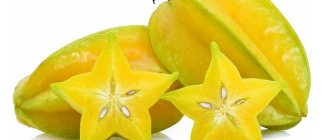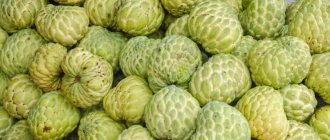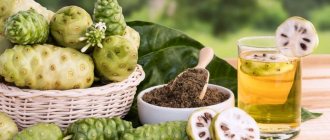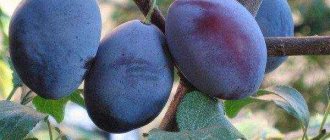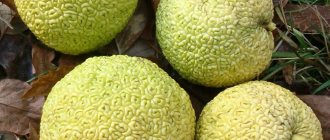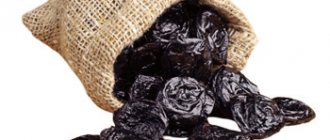The pitahaya fruit itself looks very unusual and gives the impression of a fruit of unearthly origin. Pitahaya has several names: pitaya, dragon fruit, dragon heart, dragon eye, prickly pear, dragon fruit, keumangkon. Pitahaya has a pleasant sweet taste and contains a huge amount of beneficial substances.
History and legends
An ancient legend connects the origin of this fruit with fire-breathing monstrous dragons that have lived on earth from time immemorial. The hearts of the dragons were in the form of this unusual fruit, and the taste turned out to be so divinely sweet that all the dragons were exterminated due to people's irrepressible craving for pleasure.
The seeds that fell to the ground gave rise to plants on which unusual fruits in the shape of dragon hearts began to ripen. The fruits are covered with scales resembling the skin of dragons. That's how they got their name - dragon fruit. In English it sounds like dragon fruit. Sometimes you can hear it called the dragon's eye or the dragon's heart. Locals believe that eating dragon fruit imparts strength, courage and courage to a person.
The first written mention of a cactus on which pitahaya fruits grow is found in the work of the Spanish traveler Piedro Cieza de Leon, dated 1553. He visited the little-studied country of Peru and after that wrote the book “Chronicles of Peru”, where he described dragon fruit, pineapple and potatoes. America is considered the birthplace of pitahaya, where it was known back in the 11th-13th centuries during the time of the Aztecs.
Types of pitahaya
There are three types of pitahaya, which differ in the color of the peel, pulp, taste and aroma. All species have small black seeds inside.
- White pitahaya (Hylocereus undatus) is the most common type of dragon fruit. The fruits of the white pitahaya are covered with a bright pink or red peel with light green scales, under which lies white pulp with black small seeds. It has a fresh taste and a pleasant spicy herbaceous aroma.
- Yellow pitahaya (Hylocereus megalanthus, Hylocereus grandiflora). It is much less common than white. Sometimes it is grown for decorative purposes, since when it blooms it is covered with large beautiful flowers. The peel is yellow with small scales that look like pimples. Inside the pulp is white with small black seeds. Yellow pitahaya is sweeter than white pitahaya and has a stronger flavor.
- Red or Costa Rican pitahaya (Hylocereus costaricensis) is less common than other species because it is a capricious plant and requires more care. It grows most often in Peru and Guatemala. Covered with a bright pink to red skin. Inside there is a bright red pulp with numerous black small black seeds. It has the least pronounced taste and smell compared to other species. They prefer to put Costa Rican pitahaya in salads rather than just eat it raw. If you eat a lot of fruits, your urine will temporarily turn red.
Appearance of pitahaya
The dragon fruit has an elongated oval shape and resembles a cone in appearance. On top it is covered with a smooth thick skin of bright pink, sometimes red color, on which there are leaf-like growths in the form of greenish scales. They resemble flames, reminiscent of fire-breathing dragons. Perhaps this served to consolidate the second name - dragon fruit.
Yellow pitahaya has a bright yellow skin. And most often there are no scales on it, they have transformed into rough spines-outgrowths.
The weight of the fruit varies from 150 to 600 grams; the largest pitahaya fruits are described, reaching 800-1000 grams. The color and size of pitahaya depends on the type and degree of ripeness of the fruit.
Inside the fruit there is juicy pulp of white, red or yellow color, depending on the variety. Small black seeds are evenly distributed in it. They are the size of poppy seeds and there are a lot of them in the pulp.
How to Peel, Cut and Eat Dragon Fruit
The pitahaya pulp is eaten mainly fresh, slightly chilled. Before serving, it is recommended to first peel the exotic fruit. For this purpose, the upper end is cut off, and then the skin is carefully pulled down. The freed core is placed on a plate and cut into slices.
To eat dragon fruit correctly, you can not peel it, but simply cut it in half in the peel. Then select the juicy pulp with a spoon. The seeds need to be chewed.
It is recommended to consume easily digestible dragon fruit between meals, focusing on the first half of the day, which will provide the body with the necessary energy.
Where and how does pitahaya grow?
Pitahaya is a plant from the genus of liana-shaped forest cacti. They prefer a dry tropical climate with little humidity. They grow wild in South and Central America and in Southeast Asia, where they can be found in the countries: Indonesia, Thailand, Malaysia, Taiwan, Bangladesh, Sri Lanka, Vietnam, and the Philippines.
Pitahaya cacti are not at all like the cacti that we are used to seeing in the desert. Hylocereus cacti can grow up to 10 meters in height, they have vine-like stems with flowers blooming at the ends. Pitahaya is an epiphytic plant that uses other plants as support. Aerial roots form on the stems of Hylocereus, allowing them to extract additional moisture directly from the air.
Hylocereus flowers are white, large and beautiful, reach 25-30 cm, bloom only at night and exude a pleasant soft aroma. In Thailand they are called "Moon Flowers". They are pollinated mainly by pollinating insects. The more flowers bloom on a plant, the smaller they will be in diameter.
After flowering, after 1-1.5 months, fruits form in place of the flowers. At first, regardless of the variety, they are green, but as they ripen they change color and become pink, red or yellow. After 3-5 days of persistent color change, the fruits begin to be harvested. If grown fruits are exported to other countries, they are collected unripe so as not to be damaged during transportation. During transportation, pitahaya fruits have time to ripen, but do not spoil.
Now pitahaya is grown on specialized farms, where various supports, handrails and garters are used to secure the cacti. In especially fertile years, the crop is harvested up to 5-6 times a year. Cacti propagate by stem cuttings. Periods of high humidity and heavy rainfall are detrimental to Hylocereus: flowers may fall off early and fruits begin to rot.
Pitahaya is quite unpretentious. Excessive air humidity is dangerous for it, which provokes the development of fungus on the stems, which leads to plant rotting. It is especially unfavorable if the air temperature decreases. Sometimes pitahaya is attacked by spider mites and other pests. In this case, the plants are treated with pesticides.
You might be interested in: Pad Thai
How does dragon fruit grow?
As mentioned above, native to Mexico and Central and South America, dragon fruit belongs to the cactus family, and is distributed throughout Southeast Asia and other countries. Dragon's heart, a fruit that prefers tropical dry climates, natural habitats are deciduous forests with this climate.
The plant grows up to 10 m in height. In order to rationally use the land where the exotic pitahaya fruit is grown, they organize a whole system of supports and garters to collect the extensive branched crown of the cactus into a single dome, lifting it above the surface of the earth.
Hylocereus, a climbing member of the cactus family. Since the plant is epiphytic, dragon fruit is attached to tree trunks by aerial roots and grows along the entire height of the stem, while the cactus, like any epiphyte, does not feed on the beneficial substances of trees. The main goal of the dragon fruit is to reach the illuminated areas at the top, and extract moisture from the air or find organic matter in the numerous cracks of the tree trunk. The plant also has roots underground, which grow, develop and spread along the stems on the ground.
Triangular stems of pitahaya, modified branches. Juicy and fleshy, they reach a width of five centimeters. They contain a lot of water and nutrients needed for a possible period of drought.
Short thorns are visible on the stems; these are peculiar buds from which other stems and flowers of the dragon fruit develop. The flowering period of pitahaya is short. For just one night, it produces large flowers, about thirty centimeters in diameter, pink or white, emitting a pleasant aroma. Excessive moisture is detrimental to plants, leading to bud drop and fruit rotting. Insects pollinate the plant. After the flowers wither, fruit sets. A dry climate is important for the cactus. The fruits of the plant appear 30-50 days after flowering. And in a year, pitahaya can produce up to 6 harvests.
How to eat pitahaya
The most important rule in eating pitahaya is to eat only the pulp of the fruit along with the seeds. The skin is inedible and can accumulate pesticides used in growing dragon fruit. Although the skin is not eaten, be sure to wash the pitahaya before eating it. It is believed that the taste of dragon fruit develops better if it is slightly cooled before eating: slightly cool fruit tastes better than warm fruit.
How to eat pitahaya:
- Method one. The fruit can be cut into pieces like an orange or apples and the pulp can be eaten. The peel should be left or cut off from the slices with a knife.
- Method two. You can peel the skin on top of the fruit, similar to how we peel a banana. The released pulp can be eaten, then remove the skin. And so on until the end of the fruit.
- Method three. Cut the fruit in half and eat the pulp with a spoon, just like you eat kiwi. Sometimes, when you come across a particularly sweet fruit, you can sprinkle the pulp with lemon juice to reduce the sugariness. It turns out to be a very interesting combination of flavors.
Pitahaya contains many small black seeds, which can be eaten. They contain nutrients, including lipids. Unchewed, they are not digested, but have a positive effect on the motility of the digestive system. If you chew the seeds thoroughly, the amount of nutrients entering the body will increase. It is believed that the microelements of the seeds improve vision.
Pitahaya is also widely used in cooking and added to various salads, snacks, ice cream, yoghurts, jams, and jellies. Dragon fruit juice is used in making candies and sweets. Cocktails, smoothies, alcoholic and non-alcoholic drinks are also prepared from pitaya. And they decorate the dishes.
To prepare pitahaya for salad, you need to wash it, peel it, and cut the pulp into slices. The peel, cut into large boat-shaped slices, can be used as plates for an unusual presentation of salad.
The flowers of Hylocereus cacti are also edible and are most often brewed and consumed as a flower tea.
How to clean and eat pitahaya?
Ripe fruits are easy to peel - cut off the end, pull the peel down. But you can also cut them in half and eat them with a spoon.
When preparing pitahaya for consumption, it is better to use gloves. Carefully peel it with a knife and cut into slices. You can eat the fruit yourself, use it to decorate dishes, make candied fruits, preserves, and jams. The fruit is also suitable for soups, salads, creams. Pitahaya goes well with vegetables, fish, eggs, meat, and cheeses.
Important! It is best to consume pitahaya fresh, optimally chilled. Or try something a little different. For example, combine red fruit with blue cheese, yellow with strawberries and orange slices.
You can also make healthy juice. After cutting, remove the pulp, place it in a blender, and cover with cold water. Add sugar and lime juice if necessary.
Nutritional composition and calorie content of pitahaya
Pitahaya is 90% water. It contains a lot of useful substances with a very low calorie content. Therefore, this fruit is highly valued in nutrition. The basis of the fruit is water, fiber, vitamins, macro- and microelements. The energy value of pitahaya is 50 kilocalories per 100 grams of pulp.
In 100 g of pitahaya there are:
- 0.5 grams of protein;
- 0.3 grams of fat;
- 12.0 grams carbohydrates, mostly from fiber.
The fruit contains a lot of fiber, which stimulates intestinal motility. Dragon fruit is rich in vitamins B, C, PP.
Vitamins contained in pitahaya:
- vitamin B1 - thiamine. Participates in the processes of synthesis and breakdown of proteins, fats and carbohydrates. Needed for normal functioning of the cardiovascular, nervous and digestive systems. Stimulates protein synthesis, normalizes the acidity of gastric juice.
- Vitamin B2 - riboflavin. It is an integral part of many enzymes and is involved in the production of hormones; it is necessary for the normal functioning of the thyroid gland. Necessary for the synthesis of antibodies and red blood cells. Stimulates skin regeneration, hair and nail growth. Protects the retina from excess sunlight, promotes vision adaptation in the dark.
- Vitamin B3 - niacin (nicotinic acid). Participates in redox processes, the metabolism of carbohydrates and lipids in fat cells, and is necessary for the synthesis of enzymes. Improves microcirculation in the brain by dilating capillaries and having a mild anticoagulant effect. Reduces the concentration of blood lipoproteins.
- Vitamin C - ascorbic acid. It is an antioxidant, necessary for detoxification processes in the liver, and is involved in the formation of collagen and corticosteroids. Necessary for the synthesis of connective and bone tissue.
In addition to vitamins B and C, pitahaya contains the following substances:
- potassium;
- calcium;
- iron;
- phosphorus;
- amino acids;
- carotene;
- omega-3;
- omega-6;
- polyunsaturated fatty acids;
- antioxidants.
Nutritional Value and Health Benefits of Pitahaya
100 grams contain 21 milligrams of vitamin C, or about 34% of our daily requirement. Eating dragon fruit strengthens the body's immunity and natural ability to detoxify itself. Due to its nutritional composition, the fruit is also very suitable for treating constipation. Pitahaya seeds have a strong laxative effect, which makes them effective in stimulating bowel movements. High fiber content - 3 g per 100 g. Fruits - provide 12% of the daily value of healthy fiber. In addition, the seeds contain polyunsaturated fatty acids, which have a laxative effect.
Health benefits of dragon fruit
Dragon fruit does not contain cholesterol and trans fats, which surround us everywhere. It contains simple carbohydrates, so it is easily digested and absorbed by the body. The substances contained in pitaya stimulate the immune system, accelerate wound healing, and reduce the risk of cardiovascular diseases.
Beneficial properties of pitahaya:
- Dragon fruit stimulates the immune system with antioxidants that block free radicals. Vitamins and microelements have a general strengthening effect. Pitahaya helps with frequent colds, chronic asthma and cough.
- Normalizes the functioning of the digestive system due to the large amount of fiber and seeds, which enhance intestinal motility, which leads to a mild laxative effect. Enhances the synthesis of natural probiotics.
- The outer skin improves due to B vitamins, which stimulate metabolic processes in it, help moisturize the skin, reduce irritation and have an anti-inflammatory effect.
- Reduces glucose levels in type 2 diabetes. Antioxidants and flavonoids inhibit the formation of tumor cells in the colon by scavenging free radicals and chelation of metals.
- Pitaya has antisclerotic, anti-inflammatory, antitumor, antiviral effects. The calcium contained in the fruit is needed for osteosynthesis, that is, for the construction of bone tissue. Therefore, pitahaya also has anti-osteoporotic effects, which is especially important for older people.
- It has a positive effect on the cardiovascular system, reducing blood cholesterol levels and normalizing high blood pressure. Cholesterol is reduced due to fiber, which binds excess bile acids and inhibits cholesterol synthesis in the liver.
- Iron takes part in the synthesis of red blood cells, calcium strengthens tooth enamel and bones.
Beneficial properties of pitaya
The presence of various compounds important for the life of the body in dragon fruit determines its following medicinal properties:
- anti-inflammatory;
- laxatives;
- antioxidant;
- immunostimulating.
Yellow pitahaya
The beneficial properties of pitahaya are manifested in slowing down age-related changes and strengthening the nervous system. Regular consumption of juicy pulp reduces irritability, improves mood, eliminates insomnia, and activates mental abilities.
Dragonfruit fruits help lower cholesterol levels and improve vision. They help with hypertension, regulate sugar levels, strengthen the immune system, and eliminate constipation. They allow you to normalize intestinal activity, promote the elimination of harmful toxic compounds and toxins.
Dragon fruit is useful as a preventative natural remedy for heart and vascular diseases. The seeds intensify recovery from autoimmune pathologies. The pigment lycopene, present in the red pulp of Hylocereus, is recognized as an effective element that prevents the development of prostate cancer.
When used externally, pitahaya helps fight acne. In combination with honey and cucumber, it successfully treats sunburn, moisturizes the skin, restores its elasticity, and smoothes wrinkles.
Uses of pitahaya
Dragon fruit is very popular in Asia and Central America. It is eaten fresh and dried, added to salads and various dishes and drinks. It is used to make cosmetic masks and hair care products. Pitahaya is used in nutrition and oriental folk medicine.
Pitahaya in cooking
Most often, pitahaya is used to prepare all kinds of desserts. They try to use it fresh, since any temperature treatment deprives the pulp of its delicate aroma and destroys vitamins. Different countries have developed traditions of using pitahaya. For example, in Indonesia they make alcoholic drinks based on it, in Vietnam they make desserts, and in Thailand they prefer to eat it just like that.
You may be interested: Thailand is open to tourists
What to cook at home from pitaya
- At home, you can make a fruit and berry salad from pitahaya. To do this, it is peeled, cut into small cubes and mixed with other fruits, decorated with berries on top.
- You can also first prepare a fruit salad, then pour it with pitaya, chopped in a blender.
- To prepare an alcoholic cocktail at home, you need to take peeled dragon fruit, 1 teaspoon of fresh lime juice, a quarter glass of coconut milk, 2 tablespoons of brown sugar, 100 ml of vodka. Mix everything in a blender.
- To prepare a smoothie, take pitahaya, peel the pulp, add fresh strawberries, cashew nuts and half a glass of coconut milk. Mix everything in a blender.
- Another smoothie option: dragon fruit, pineapple, banana, a little ginger, boiled water. Everything goes into the blender. Add the fruits you like best to your smoothie in the proportions you like best. There are no strict cooking rules.
Using pitahaya for weight loss
Dragon fruit lowers cholesterol levels, activates metabolism, speeding up metabolism; the omega-3 and omega-6 it contains normalize fat metabolism. Most often, when losing weight, various smoothies are prepared from pitahaya along with other fruits.
Dragon fruit in cosmetology
Antioxidants contained in dragon fruit maintain the beauty and youth of the skin by stimulating repair processes in the skin, saturating it with moisture and accelerating metabolic processes. For these purposes, pitahaya can be consumed internally. You can also prepare a nutritional mass from it and apply it to the skin as a mask.
How to make a nourishing face mask yourself:
- for normal skin . You need to wash the pitahaya, remove the pulp, grind it in a blender until smooth, add a few drops of citrus or rose bush essential oil, and mix. Apply to facial skin for 10-15 minutes, rinse with still mineral water. There is no need to apply the resulting mass to the skin of the eyelids and sensitive skin around the eyes.
- For oily skin. Grind the pitahaya pulp in a blender, add 3-5 drops of tea tree essential oil, mix, apply to the face. After 15-20 minutes, rinse with cool, clean water.
- To fight acne. Wash the dragon fruit, peel the pulp, cut it into small pieces and apply to the sore areas of the skin on the face. After 15 minutes, remove the pitahaya and wash your face with warm water. Repeat every day morning and evening.
How to make pitahaya body scrub
You can make a face and body scrub from dragon fruit at home. For a rougher scrub, you can mash the fruit pulp by hand, and then the seeds will remain intact. They perform the main abrasive function, exfoliating old cells and massaging the upper layers of the skin. For a softer facial scrub, the pulp of the fruit must be crushed in a blender, the seeds will be ground. Adding lemon juice to the pulp pulp will give a slight whitening effect.
Hair care with pitahaya:
- You need to squeeze the juice out of the fresh fruit and add a little to your hair conditioner; this can be done every time you wash your hair. This procedure is recommended for those whose hair has been damaged by dyeing; with constant use, it returns shine and silkiness to it.
- Pitaya is also used to make a nourishing hair mask. To prepare it, the pulp of the fruit is crushed in a blender, applied to the scalp, put on a special plastic cap, and covered with a thick towel. After 15-20 minutes, wash your hair with shampoo.
Use of pitahaya in medicine
In traditional and folk medicine in Russia, pitahaya is not used, since it does not grow here. But dragon fruit is widely used in Eastern folk medicine, and in Thailand in particular.
Pitahaya in Eastern folk medicine:
- decoctions of Hylocereus flowers (10 grams of dried flowers per glass of water) are given to drink for urolithiasis and helminthiases;
- compresses from the pulp of the fruit are applied to sore joints with arthrosis;
- pitahaya juice mixed with honey and cucumber juice helps with burns, including sunburn;
- taking pitaya orally is recommended for mild forms of gastritis, liver diseases, and high blood pressure;
- Eating dragon fruit on an empty stomach along with seeds normalizes insulin production in patients with type 2 diabetes.
Eating pitahaya during pregnancy
A contraindication to eating pitahaya during pregnancy may be the possibility of an allergic reaction, which can negate all the positive properties of the fruit. If you have already eaten it before and are not allergic to it, then you can eat dragon fruit during pregnancy, observing strict moderation.
If you are trying this fruit for the first time, be careful, as it is unknown how the body may react to it. Perhaps during pregnancy it is better to refrain from getting acquainted with pitahaya altogether. Remember that the little person inside you may have a different reaction to this fruit, and it may cause an increased allergic background in the child, and you will not know about it. And in the future the child will be allergic.
Considering the amount of nutrients contained in pitahaya, its consumption during pregnancy is beneficial. Iron is involved in the synthesis of red blood cells and fights the development of anemia, which is very good given the increased load on a woman’s body during pregnancy. Dragon fruit is also a source of folic acid, which is necessary for the normal intrauterine development of a child.
Eating pitahaya while breastfeeding
If before pregnancy and childbirth pitahaya was part of your diet and did not cause allergies, then you can try it with caution while breastfeeding. In this case, you need to monitor your child to see if pitahaya will cause allergic reactions in him. Now the baby is no longer protected by your immune system, as it was during pregnancy. And everything you eat goes to him through breast milk. The baby's body must adapt to the new fruit.
Can children eat pitahaya?
Despite the fact that pitahaya contains a lot of vitamins, minerals and other necessary substances, it is better for children under seven years of age not to eat it at all. Children's immune systems are not fully formed, and it is not clear how it might react to an unknown new product. Like any other exotic fruit, pitaya can cause an unpredictable allergic reaction, which can be very strong, including angioedema or anaphylactic shock. If this suddenly happens in distant Thailand, you need to react quickly, as immediate medical attention will be required, and this can be a problem. Therefore, it is better not to take risks and not give dragon fruit to young children. They will grow up and try.
You may be interested in: Snakes of Thailand
What are the benefits of pitahaya?
Dragon eye is known as a fruit that has many health benefits. It contains vitamins and minerals that have a positive effect on the functioning of the immune system. People suffering from stomach or intestinal disorders use pitahaya to normalize digestion and the process of lipid breakdown.
The small black seeds of the fruit pulp contain a large amount of fat-containing compounds involved in the creation of cell membranes. They are rich in fatty acids, which reduce the amount of “bad” cholesterol in the blood. However, in order for the seeds to show their positive properties, they must be chewed thoroughly.
Thiamine contained in fruits contributes to the normal functioning of the cardiovascular and nervous systems. This vitamin is necessary for people facing high physical activity to improve muscle tone.
We recommend reading: What are the benefits of coconut flakes and how to make it at home
Pitahaya is rich in fiber, which helps slow down the breakdown of sucrose. The GI (glycemic index) of the product is quite low. This is especially important for those who suffer from type 2 diabetes.
Pitahaya fruits cleanse internal organs of toxins. The antioxidants they contain help remove free radicals from the body.
Dragon fruit tones and moisturizes the skin and is actively used in the field of cosmetology.
Doctors strongly recommend that pregnant women introduce this healthy fruit into their diet, as the beneficial ingredients have a beneficial effect on the health of the fetus and the woman.
In cooking, pitahaya is used as one of the components of fruit salads, desserts, smoothies and ice cream. Combinations of fruit with banana, pineapple, and muesli are healthy and tasty.
For example, a smoothie made from fruit pulp with apple and lemon juice, a small amount of spinach and grated ginger is a storehouse of vitamins and biologically active substances that is useful both for improving immunity and for preventing weight loss. Another interesting dessert is fruit ice with the addition of pitahaya. A peculiar rich pink color with small inclusions of black seeds, a pleasant taste, will not leave either children or adults indifferent.
Dragon fruit fully tones and moisturizes the skin; it is actively used in cosmetology as ingredients in tonics, gels, face and body creams. At home, ice cubes with pitahaya juice are a good morning tonic. A scrub version of an exfoliant using fruit is also interesting. Gentle and gentle cleansing of the skin combined with saturation with vitamins and other beneficial components.
Contraindications to pitahaya
Pitahaya does not have many contraindications for consumption. One of the most important rules is moderation. You should not eat it in unlimited quantities, since in this case even a normal person (not an allergy sufferer) can disrupt the immune response. One or two fruits a day is enough.
Pitahaya may cause allergic reactions. It is more likely to occur in young children and people with increased allergies, especially if there is intolerance to other foods. When trying dragon fruit for the first time, eat a small piece; if there are no allergy symptoms, you can eat more pitahaya the next day. If after eating dragon fruit unpleasant things appear: rash, itching, sneezing, tearing, then it is better to avoid further consumption of pitahaya.
People with weak digestive systems should eat dragon fruit with caution. Pitahaya can cause heartburn, flatulence, and diarrhea.
Pitahaya turns your urine red, so don't be alarmed if you notice a change in the color of your urine, it's supposed to be that way.
Harm of pitahaya and contraindications
In some cases, pitahaya can cause both harm and benefit to the body. If you adhere to a balanced diet, the fruit has virtually no negative effect on human health. The only serious contraindication is individual intolerance to the fruit.
We recommend reading: Lime: beneficial properties and contraindications
It should be noted that after a person eats red pitahaya, his urine turns red. This is only due to the high content of pigments in the product and does not have a negative effect on the body.
How to choose dragon fruit
When choosing a fruit, you need to pay attention to the peel of the fruit. It should be intact, without damage or dark spots. A well-ripened fruit should be a little soft and give in a little when pressed, like an avocado. The place of attachment to the stalk on the cactus should be dry.
If the fruit feels hard to the touch, it means it is not yet ripe. In this case, it can be placed in a dark, dry place where it will gradually ripen. Also, the unripeness of the pitahaya will be indicated by the pale, uneven, dim color of the skin. Choose the brightest fruit from all those presented in the store or market stall.
You should also examine the scales on the skin; in ripe fruits they should be dense and yellow-green. Dried, darkened scales will indicate that the fruit is overripe. Excessive softness will also indicate that the fruit is overripe.
How to choose the right dragon fruit
When buying dragon fruit, first of all, pay attention to the peel. Bright colors with a slight shine and yellow-green scales indicate the maturity of the fruit. If the color is uneven, then the fruit is not yet ripe and should not be taken.
Important! If there are dried spots, spots or pale scales on the surface of the fruit, this means that it has been lying on store shelves for a long time.
Fruit that is too hard or soft is also a bad sign. A ripe and tasty fruit, it should feel like kiwi to the touch.
Is it possible to grow dragon fruit at home?
At home, you can try to grow Hylocereus cactus from the seeds found in the pulp of the fruit. To do this, you need to remove the seeds from the ripe fruit and germinate them in gauze or other soft tissue. When tender sprouts appear, they should be transplanted into a small pot of soil. It is better to place it in a bright, warm place, for example on a windowsill on the south side.
While the cactus shoot is still small, you can build a small greenhouse over it from a plastic bag, which will protect it from drafts and changes in temperature and humidity. Hylocereus is a fast growing cactus and can grow up to 80 cm in length in a year. Despite the fact that this plant is a cactus, it needs moderate regular watering.
It is not difficult to grow Hylocereus, but it is difficult to obtain and grow the fruits. To do this, you need to immediately plant not one, but two or, better, three plants at once, since they are cross-pollinated. To stimulate abundant flowering, you need to add nitrogen fertilizers to the soil. When the flowers bloom, they need to be fertilized.
Usually insects perform this role, but at home you will have to resort to artificial insemination. At night, when the flowers bloom, you need to take a soft fluffy brush and pollinate all the flowers with it. At first, regardless of the variety, the fruits are green, but as they ripen they turn pink, red or yellow.
The Hylocereus cactus prefers warm, bright places, but it can cope with periodic drops in temperature (almost to zero) and a decrease in the amount of light. But these factors will slow down its growth and flowering. As the cactus grows, it will need a larger pot (up to 10-20 liters). Be sure to place a layer of drainage at the bottom of the pot, since the cactus does not tolerate stagnant water at the tips of the roots.
How to grow pitahaya at home
Pitahaya is the fruit of a plant that is not too picky about its conditions. Therefore, it can be easily grown at home. Dragon fruit grows well in a warm and bright room, however, it can withstand lower temperatures and periodic darkening.
To grow pitahaya, you need to germinate its seeds (small inclusions contained in the pulp of the fruit). To do this, use a slightly damp gauze cloth into which the seeds are placed. When they germinate, they are planted in the ground and the seedlings are placed on a lighted windowsill.
As a rule, shoots grow and develop quickly. Over the course of a year they reach about 80 cm in height. The plant must be regularly watered and fertilized with nitrogen mineral components.
Important! In order for a cactus to bear fruit, it is necessary to grow at least two copies and pollinate them.
Interesting facts about pitahaya
Pitahaya is native to Central America; these fruits were known to the Anztecs. Europeans became acquainted with them when the first conquistadors reached the shores of America. The Spaniards could not bring home these unusual fruits, as they spoiled very quickly. Therefore, only oral stories about the dragon fruit reached their native shores. It was only in 1870 that the cacti themselves were brought to France, which made it possible to grow pitahaya in Europe for the purpose of decorating gardens.
Now cultivated pitahaya is grown in many Asian countries, producing a record 25-30 tons per hectare. The grown fruits are used in cooking, perfumery, cosmetology, pharmaceuticals (plant stems and flowers), and in the production of alcoholic and non-alcoholic drinks.
Sometimes pitahaya is grown for decorative purposes because of its beautiful large flowers or to create hedges.
You might be interested in:
Visa to Thailand
Do I need a visa to Thailand? What types of visas are there? Where to apply for a visa to Thailand. Deadlines for registration. Border Run. Visa-ran. When going to Thailand, you definitely need to...
Thailand is open to tourists
Since December 2021, Thailand has opened its borders to tourists, including Russian ones. The Kingdom is ready to receive tourists regardless of the epidemiological…
Utapao
Utapao is a small international airport 40 kilometers from the famous resort of Pattaya in Thailand. Utapao is located in Rayong province, it is the closest…
Fruits of Thailand
What unusual fruits grow in Thailand? What should you try and when? What can Thailand offer you? The Kingdom of Thailand is a country of popular...
